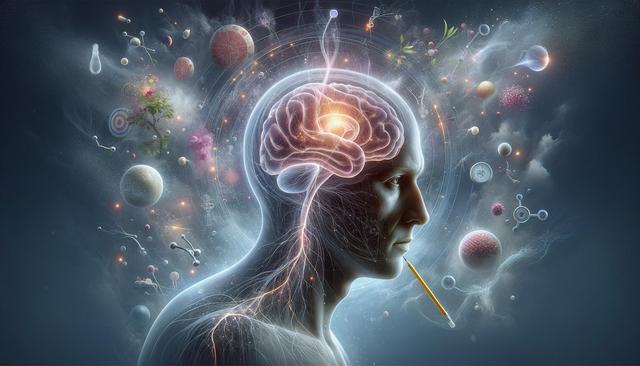The Importance of Early Intervention in Stroke Therapy
Time is one of the most critical factors when it comes to stroke recovery. Early intervention through stroke therapy can significantly influence a patient’s recovery trajectory. When therapy begins soon after the initial stroke event, it can help limit long-term disabilities and support the brain’s ability to adapt and reorganize. This period, often referred to as the ‘golden window’ of recovery, is when the brain demonstrates the highest level of plasticity, or the ability to rewire itself.
Stroke therapy plays a crucial role in helping individuals regain function and improve their quality of life after a stroke by addressing issues such as muscle weakness, speech difficulties, and cognitive impairments. Therapies initiated early can include:
- Physical therapy to restore motor skills and mobility
- Occupational therapy to aid in daily living activities
- Speech-language therapy to address communication and swallowing challenges
Prompt rehabilitation can also reduce the risk of secondary complications like pneumonia, deep vein thrombosis, and depression, which can arise from prolonged inactivity or isolation.
Types of Stroke Therapy and Their Benefits
Stroke therapy encompasses a wide range of specialized treatments aimed at promoting recovery and independence. The type and combination of therapies a person receives depend on the severity and location of the stroke, as well as individual needs. Each form of therapy targets specific areas affected by the stroke.
Some of the most commonly recommended therapies include:
- Physical therapy: Helps improve strength, coordination, and balance. It often includes exercises and mobility training.
- Occupational therapy: Focuses on helping individuals relearn daily tasks such as dressing, eating, and bathing, using adaptive techniques when necessary.
- Speech therapy: Assists with regaining the ability to speak clearly, understand language, and swallow safely.
- Cognitive therapy: Addresses challenges such as memory loss, attention deficits, and problem-solving difficulties.
Stroke therapy plays a crucial role in helping individuals regain function and improve their quality of life after a stroke by offering a personalized approach that evolves as the patient progresses through their recovery journey.
Innovative Approaches to Stroke Rehabilitation
Advancements in medical technology and research have led to new and innovative approaches in stroke therapy. These methods aim to enhance traditional rehabilitation techniques and provide patients with additional tools for recovery. One such innovation is the use of robotics and virtual reality (VR) in physical and occupational therapy settings.
Examples of emerging therapies include:
- Robotic-assisted therapy: Devices that support repetitive movements, helping to improve motor function in weakened limbs.
- Virtual reality exercises: Engaging simulations that encourage movement and cognitive engagement in a controlled environment.
- Constraint-induced movement therapy (CIMT): Encourages the use of the affected limb by restricting the unaffected one, promoting neuroplasticity.
These approaches are often used alongside conventional treatment methods, reinforcing the idea that stroke therapy plays a crucial role in helping individuals regain function and improve their quality of life after a stroke by utilizing both traditional and modern tools.
Emotional and Psychological Support in Stroke Recovery
Recovering from a stroke goes beyond physical healing. Emotional and psychological well-being is a vital component of comprehensive stroke therapy. Many survivors experience feelings of frustration, anxiety, or depression due to changes in their abilities and lifestyle. Addressing these emotional challenges is essential for long-term recovery and quality of life.
Supportive therapies may include:
- Counseling or psychotherapy: Provides a safe space for individuals to process emotions and develop coping strategies.
- Support groups: Connect stroke survivors with others who understand their experiences, fostering a sense of community.
- Mindfulness and relaxation techniques: Help reduce stress and improve focus during rehabilitation sessions.
Family involvement is also crucial, as caregivers play an essential role in the recovery process. Education and counseling for loved ones can help them provide better support and manage their own stress. Stroke therapy plays a crucial role in helping individuals regain function and improve their quality of life after a stroke by addressing not only physical but also emotional needs.
Long-Term Recovery and Life After Stroke
Stroke recovery is often a long-term process that continues well beyond the initial rehabilitation period. For many individuals, maintaining progress and adapting to new challenges is an ongoing journey. Long-term stroke therapy focuses on sustaining gains made during early recovery and preventing setbacks.
Key components of long-term stroke care include:
- Regular follow-up appointments: To monitor progress and adjust therapy plans as needed
- Community-based rehabilitation programs: Offer continued therapy and social engagement opportunities
- Home exercise programs: Help individuals maintain strength and mobility independently
- Assistive devices and home modifications: Improve safety and accessibility in daily life
Stroke therapy plays a crucial role in helping individuals regain function and improve their quality of life after a stroke by providing ongoing support that adapts to each phase of recovery. With the right resources and a dedicated care team, many stroke survivors can achieve significant improvements and lead fulfilling lives.
Conclusion: Empowering Recovery Through Stroke Therapy
Stroke therapy is a multifaceted and evolving field that offers hope and practical support to individuals affected by stroke. Whether initiated in the early stages or continued as part of long-term care, therapy helps restore independence, rebuild confidence, and improve overall well-being. Stroke therapy plays a crucial role in helping individuals regain function and improve their quality of life after a stroke by addressing both physical and emotional aspects of recovery. For patients and caregivers alike, understanding the available therapies and engaging actively in the process can make a meaningful difference in the journey toward recovery.






